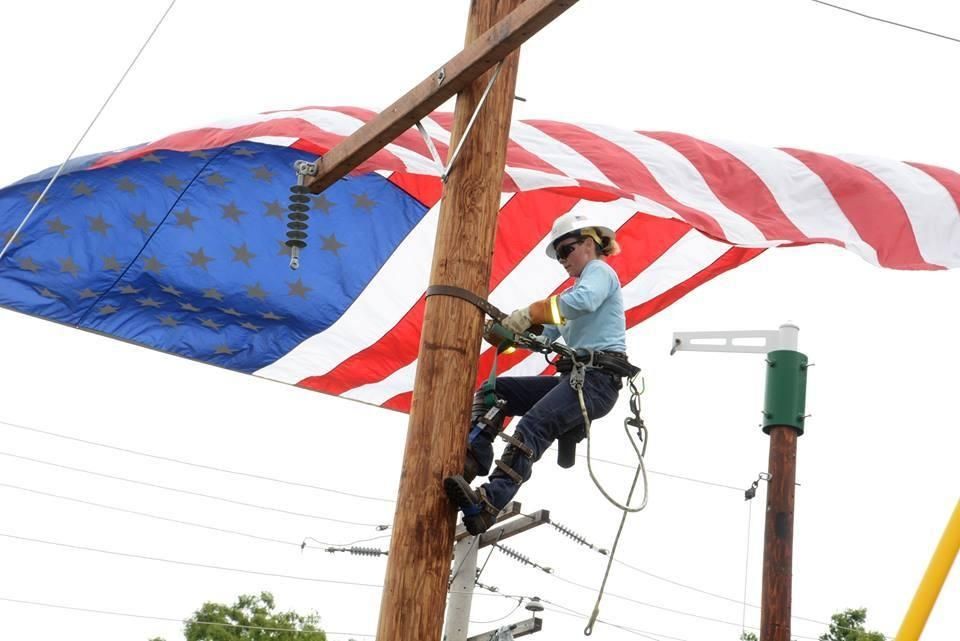Power to the People is NH Consumer Advocate D. Maurice Kreis’ column about what happens long before you turn on the lights. Kreis and his staff of four represent the interests of residential utility customers before the NH Public Utilities Commission and elsewhere. InDepthNH.org co-publishes Power to the People with Manchester Ink Link.
By D. Maurice Kreis,
Power to the People
New Hampshire uses about 9 percent of New England’s electricity. So, if a couple of rogue utilities pulled some sneaky tricks over three years that caused wholesale electricity prices in New England to be $3.6 billion higher than they should have been, that’s $324 million that was siphoned out of the pockets of electric customers in the Granite State.
It’s enough to attract the fervent interest of the office tasked with protecting the interests of New Hampshire’s residential utility customers. And, believe me, we’re interested.
 Who are these potentially rogue utilities? They are cheekily referred to as Firm A and Firm B throughout most of the charging document – a white paper circulated a couple of weeks ago entitled “Vertical Market Power in Interconnected Natural Gas and Electricity Markets.”
Who are these potentially rogue utilities? They are cheekily referred to as Firm A and Firm B throughout most of the charging document – a white paper circulated a couple of weeks ago entitled “Vertical Market Power in Interconnected Natural Gas and Electricity Markets.”
The authors are four economists: Levi Marks of the University of California at Santa Barbara, Charles F. Mason of the University of Wyoming, Kristina Mohlin of the Environmental Defense Fund, and Matthew Zaragoza-Watkins of Vanderbilt University.
The two companies are utility conglomerates that own both natural gas and electric utilities in various New England locations. Firm A is Avangrid, parent company of Central Maine Power, United Illuminating and, critically for this situation, Berkshire Natural Gas, Connecticut Natural Gas and Southern Connecticut Gas.
Firm B is Eversource.
Here in the Granite State, Eversource is familiar as the parent company of the utility formerly known as Public Service Company of New Hampshire (PSNH). Eversource also owns electric and natural gas utilities in Massachusetts and Connecticut. And for purposes of our present story, those natural gas holdings loom large indeed.
According to the authors of the white paper, during a three-year study period that began in 2013 there was a distinct pattern of Firm A and Firm B buying up and holding onto natural gas pipeline capacity – that is, the right to take fuel out of a federally regulated wholesale pipeline in order to serve the utilities’ retail gas customers.
“These unusual scheduling practices tied up capacity that, in a well-functioning market, should have been released, or would have otherwise [been] made available to other shippers,” the authors allege. “Instead, significant quantities of pipeline capacity went unutilized on many of the coldest days of the year, pushing up the price of gas.”
The period the professors studied included the brutal “Polar Vortex” winter of 2013-14, often cited as the time when natural gas became so scarce that the electricity grid almost went down because generators could not get enough fuel.
Indeed, the authors allege that the Polar Vortex period accounts for about half of the $3.6 billion they believe electric customers should not have coughed up.
What does the price of natural gas have to do with electricity?
Well, roughly half of the region’s electricity is produced via natural gas at facilities owned by non-utilities that sell their output into the region’s wholesale electricity market.
They could guarantee their fuel supply by purchasing “firm” capacity on natural gas pipelines, but they generally find that too expensive. On the chilliest days of a chilly winter like 2013-14, the price of “spot” capacity on natural gas pipelines soared and, although the lights did not go out, the wholesale price of electricity likewise zoomed upward.
According to the paper’s authors, the odd pattern of natural gas capacity withholding took place at pipeline delivery “nodes” along the Algonquin pipeline in Connecticut and Rhode Island – a key source of fuel for generators throughout the region.
The authors state that Eversource and Avangrid are “the only two firms operating on the pipeline with substantial assets and operations in both the gas distribution market and the electricity generation market.”
Moreover, the authors point out, Firm A and Firm B are distinctive in that their generation assets are mostly not natural gas units. Think of the coal-burning units in Bow and Portsmouth that Eversource is now in the process of divesting.
The authors thus claim that Eversource and Avangrid had an incentive to drive up the costs of gas generators owned by rival firms, increasing the wholesale price of electricity and benefitting the entire generation sector at the expense of New England electric ratepayers.
Eversource has denounced these claims as a “complete fabrication.” And the utility’s argument is not without some merit.
For one thing, Eversource’s generation assets – all in New Hampshire, and all scheduled to be sold off on January 1 – currently operate for the benefit of Eversource customers rather than Eversource shareholders.
Though Eversource customers in New Hampshire are about to start paying off some $600 million in stranded costs (the majority associated with the company’s profligate investment of $418 million in mercury scrubber technology at Merrimack Station in Bow) one consequence is that, pre-divestiture, if those coal units get dispatched more often and/or command a higher price on the wholesale market, the financial gain is credited to customers.
Another argument in Eversource’s favor – indeed, one explicitly conceded by the economists – is that the capacity withholding appears to have been legal. There are penalties for pipeline capacity users that reserve such rights (known in industry parlance as “nomination”) and then fail to use them.
But each day there is a so-called “clean up cycle” that utilities can use to match their nominations to their actual use of gas to serve customers. There was a lot of that cleaning up happening on the pipeline nodes studied by the authors during the period they examined.
Finally, it’s possible that some or even all of the odd capacity usage patterns detected by the authors is attributable to natural gas generators located along those nodes in southern New England rather than to the natural gas utilities owned by Eversource and Avangrid.
That will require further investigation. Ergo, those who claim this looks a lot like the next Enron scandal are probably overstating their case.
But Eversource still has plenty of ‘splaining to do. Its claim of “complete fabrication” amounts to a denial of any wrongdoing or criminal intent – and thus no grounds to pay back any of that $3.6 billion. This begs the question of whether something is in dire need of a fix here.
In other words, maybe we need to take a look at the way we manage capacity on New England’s interstate natural gas pipeline network before we declare the system so broken – i.e., so unable to meet the needs of electric and natural gas customers during cold winters – that we need to embrace a novel scheme like the Access Northeast project.
Access Northeast is a planned expansion of the very same Algonquin pipeline at issue here. Eversource would own 40 percent of the expansion project. It wants its electric distribution subsidiaries, including PSNH, to buy 20 years of “firm” capacity on the project – capacity they will never use directly because they are (or will be, post-divestiture) not generation companies – and force their customers to pay for it.
The theory is that the capacity will be sold to non-utility generators, wholesale electric prices will abate, and customers will benefit. The reality is that Eversource wants to get back into the business of making big investments and receive a guaranteed return on investment from customers – the very 1950s business model that restructuring was supposed to end.
Could it be that Eversource’s zest for this 1950s business model accounts for the way its natural gas subsidiaries managed their capacity purchases during the period studied by the economists? That’s the $3.6 billion question.
If this anomalous pattern of pipeline capacity management truly accounted for even a significant fraction of this sum, we obviously need to be very careful about how we regulate all of this.
Access Northeast is currently on hold, because the Supreme Judicial Court of Massachusetts deemed the scheme inconsistent with the Bay State’s restructuring law and the New Hampshire Supreme Court is currently mulling the same question under our restructuring statute. That opens up some time for a thorough investigation of the allegations of the four economists.
Connecticut’s utility regulator, which has direct authority over the natural gas utilities in question, has laudably opened a docket for this purpose. So should the Federal Energy Regulatory Commission. We need to get to the bottom of this.
Power to the People by D. Maurice Kreis
Oct. 2, 2017: Lawmakers Hear Truths and Tales about Electricity
Sept. 11, 2017: A Whiskey Tango Foxtrot Moment for Natural Gas in NH
Aug. 21, 2017: Better Than Biking the Kancamagus on Your Harley
July 31, 2017: PSNH to be Restructured at Last – Maybe
May 12, 2017: Northern Pass Op-Ed: Mr. Quinlan: Tear Down This Wall





